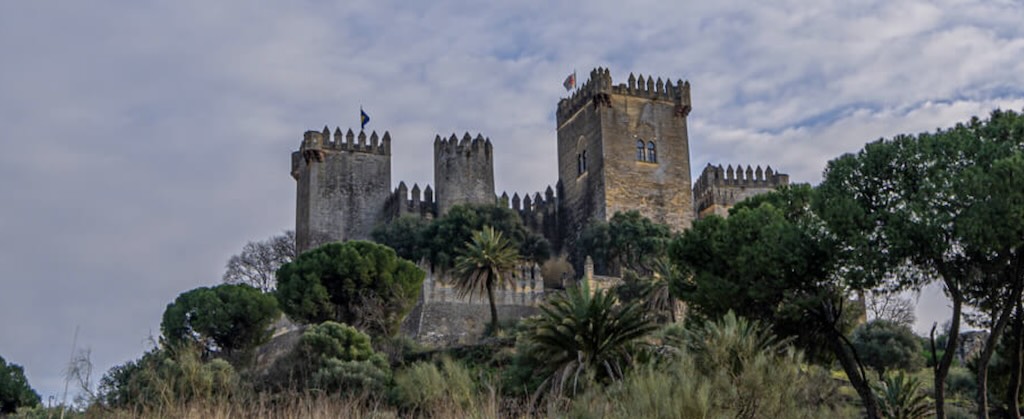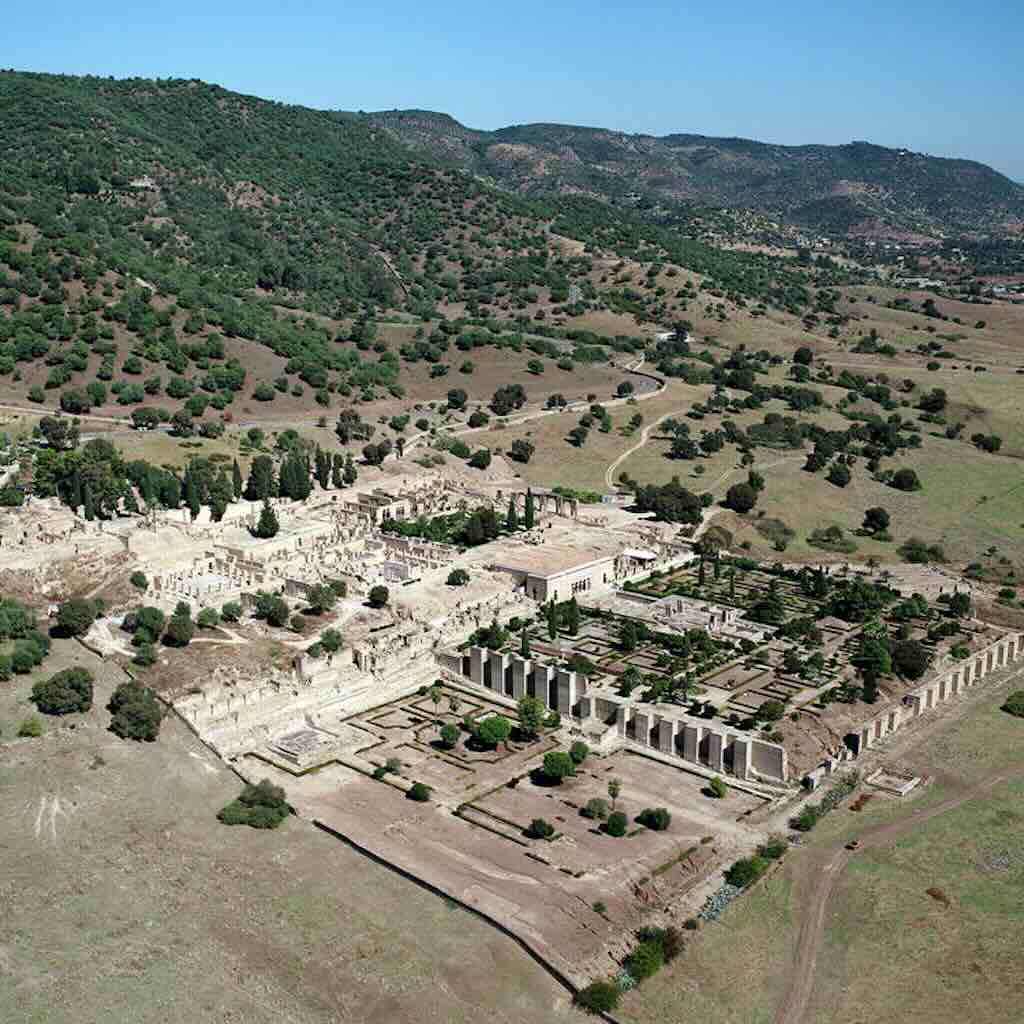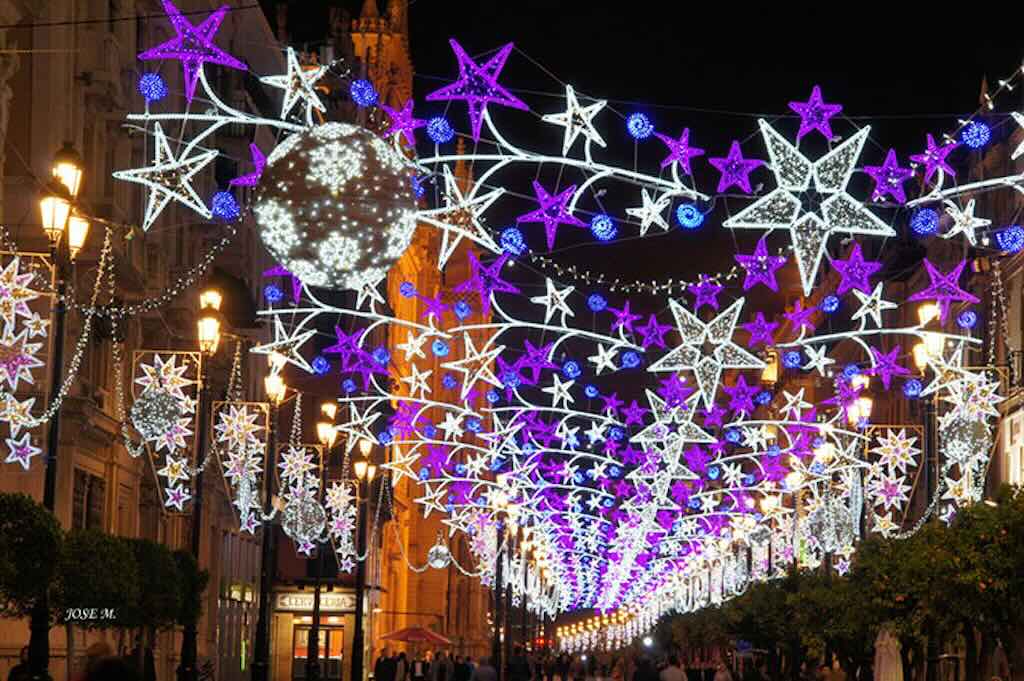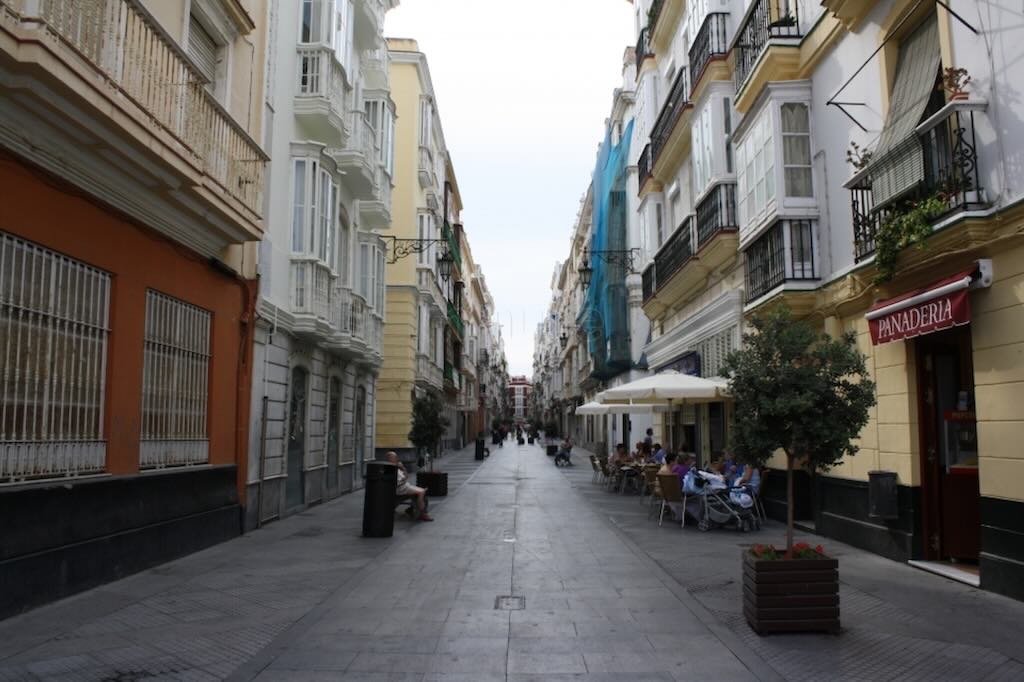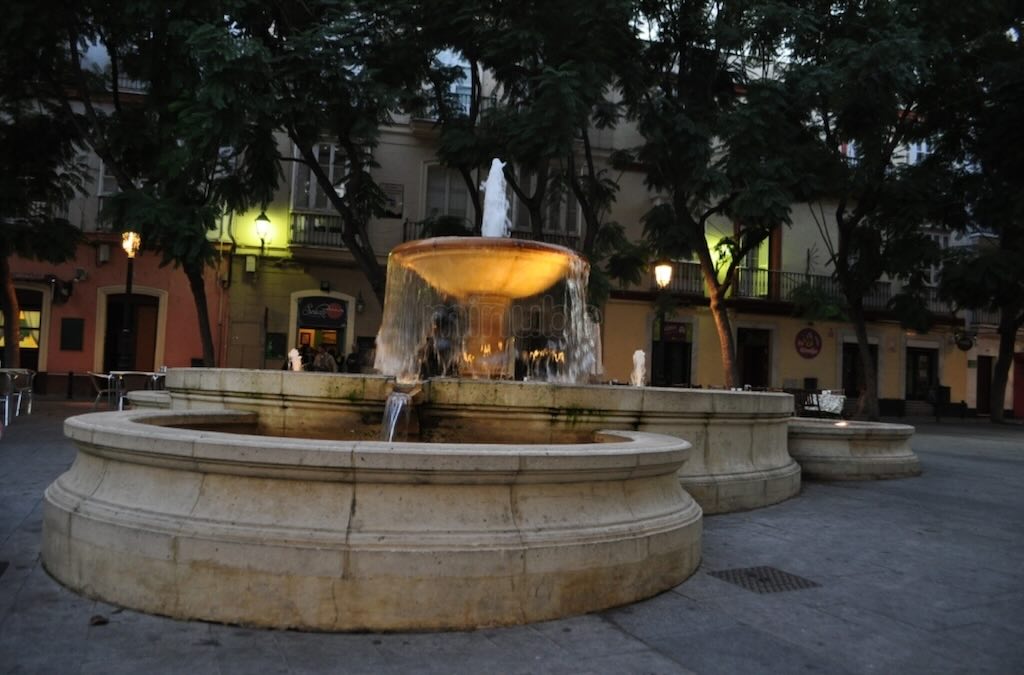In this post I’m going to rapidly look at postage stamps from South America. I’m not a stamp collector, but I have accumulated quite a collection of stamps over the years, and recently I’ve started to arrangement them all in stock books for safe keeping (although I don’t have any valuable stamps).
My collection of South American stamps was recently enriched by a number of old albums purchased on eBay, each for a few euros (the postage often cost more than the album). I have made no targeted effort to buy or collect stamps from South America.
Countries of South America

I’m not out to invent anything new, so I’ve used Wikipedia’s definition of South America. The continent is generally taken to include twelve sovereign states, namely Argentina, Bolivia, Brazil, Chile, Colombia, Ecuador, Guyana, Paraguay, Peru, Suriname, Uruguay, and Venezuela. In addition two dependent territories are included, namely the Falkland Islands and South Georgia and the South Sandwich Islands. There is also one internal territory, which is the French overseas department of French Guiana.
In addition, the ABC islands (Aruba, Bonaire, and Curaçao) of the Kingdom of the Netherlands, Ascension Island (dependency of Saint Helena, Ascension and Tristan da Cunha, a British Overseas Territory), Bouvet Island (dependency of Norway), Panama, and Trinidad and Tobago are also often considered parts of South America. I have excluded Panama, preferring to include that country as part of Central America, and also I’ve considered Trinidad and Tobago as the southernmost island country in the Caribbean.
ABC islands (Aruba, Bonaire, and Curaçao)
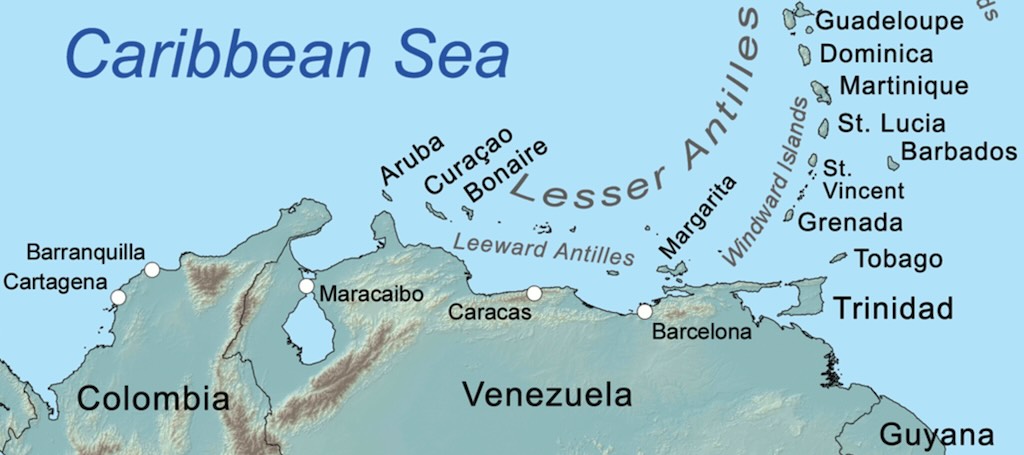
The ABC islands is the physical group of Aruba, Bonaire, and Curaçao, the three westernmost islands of the Leeward Antilles in the Caribbean Sea. Today Aruba and Curaçao are autonomous, self governing constituent countries of the Kingdom of the Netherlands, while Bonaire is a special municipality of the Netherlands. The countries are outside the European Union, but the citizens have Dutch nationality.
The Leeward Antilles are a chain of islands in the Caribbean – specifically the southerly islands of the Lesser Antilles (and, in turn, the Antilles and the West Indies) along the southeastern fringe of the Caribbean Sea, just north of the Venezuelan coast of the South American mainland. The Leeward Antilles, while among the Lesser Antilles, are not to be confused with the Leeward Islands (also of the Lesser Antilles) to the northeast.
The name Aruba most likely came from the Caquetío Oruba which means “well situated island”. The name ‘Bonaire’ is thought to be derived from the Caquetio word ‘Bonay‘, meaning ‘low country’. One explanation for the name Curaçao was the autonym by which its indigenous peoples identified themselves.
The florin (Afl, AWG) or Aruban guilder is the currency of Aruba. The currency of Bonaire is the United States dollar. The Netherlands Antillean guilder is the currency of Curaçao.
Wikipedia also has a webpages on “Postage stamps and postal history of the Netherlands Antilles” and on “Postage stamps and postal history of the Caribbean Netherlands“. In addition, Wikipedia also has an entry on the “Postage stamps and postal history of Aruba” and a separate entry on the “Postage stamps and postal history of Curaçao“.
Aruba is interesting for the stamp collector because they only started to issue stamps after their separation from the Netherlands Antilles in 1986. And they don’t issue many stamps annually. On top of that its must be one of the smallest permanently inhabited nation states that issues stamps. However, a word of warning, many small states issues stamps not because they are useful, but simply to bring in foreign currency.
Argentina

The Argentine Republic is a country in the southern half of South America, and is the second-largest country in South America after Brazil, and the eighth-largest country in the world. Argentina is a federal state (created in 1861) and is subdivided into twenty-three provinces. The federal capital and largest city is Buenos Aires. The 1826 constitution includes the first use of the name “Argentine Republic” in legal documents.
Argentina (an Italian adjective meaning “silvery“) is ultimately derived from the Latin argentum “silver” and the feminine of the adjectival suffix -inus. The earliest description of the region by the word Argentina has been found on a Venetian map from 1536.
The peso (established as the peso convertible) is the currency of Argentina since 1992, identified within Argentina by the symbol $ preceding the amount in the same way as many countries using peso or dollar currencies. The peso was a name often used for the silver Spanish eight-real coin. Following independence, Argentina began issuing its own coins, denominated in reales, soles and escudos, including silver eight-real (or sol) coins still known as pesos. These coins, together with those from neighbouring countries, circulated until 1881. The peso moneda nacional (m$n) was the currency of Argentina from 5 November 1881 to 1 January 1970, the date in which the peso ley 18.188 was issued to the Argentine public. It was subdivided into 100 centavos, with the argentino worth 5 pesos.
Wikipedia also has a webpage on “Postage stamps and postal history of Argentina“, where we learn that postage stamps were first issued in 1858, and nationally in 1862.
I have about 300 stamps from Argentina (more than half are duplicates), but almost no multicolour commemoratives. My earliest stamp dates from 1862, and I have virtually no stamps after the early 60s. There were however nearly forty different portrait stamps.
Two surprises. The first is a perfect looking mint 10 cents 1862 Coat of Arms – “REPUBLICA” – without Accent on “U”. The second was finding an envelope sent from Argentina to my mother-in-law in 1981.
It should be noted that the 1862 mint 10 cents is known to have been forged some years later, possible by the same printer (Roberto Lange). The narrow and closed ‘C’ in centavos distinguishes this reproduction from the (much more valuable) real thing. Still, it is collectable as a curiosity in its own right. My ‘C’ is a bit narrow, but not closed.

Just to highlight the degree of attention needed when sorting through apparently identical duplicates. Above we see the 1924/1933 definitive issue with the effigy of General José de San Martin, a key figure in South America’s successful struggle for independence from the Spanish Empire. We can see that printed on the same sheet there are two versions of the same stamp, one with a dot after denomination, and one without the dot. If you are not expecting and looking for differences, you may never notice them.
More generally, it looks as if forging stamps was quite common certainly before the 1940’s, so any valuable Argentinian stamp would need to be certified as being an original.
It certainly looks as if Argentinian stamps are a popular topic, e.g. check out “The Argentina 1935-51 Definitive Series“, which has a focus on the famous “bulls head” and the equally interesting map of South America. And even more specialised is this page dedicated to the paper and watermarks used for these stamps.
Facts about Argentina
National colours – Light blue and white
National animal – Rufous hornero (national bird)
National bird – Rufous hornero (Furnarius rufus)
National tree – Red quebracho (Schinopsis balansae)
National flower – the Ceibo tree (Erythrina crista-galli)
National food – Asado, Empanada, Matambre, Locro
National drink – Mate
National fruit – Apple (Malus domestica)
National dance – Tango, Pericón
National sport – Pato, also called juego del pato, literally “duck game”, is a game played on horseback that combines elements from polo and basketball
Football nickname – La Albiceleste (‘The White and Sky Blue’)
Highest mountain – Aconcagua (6960 m)
Bolivia
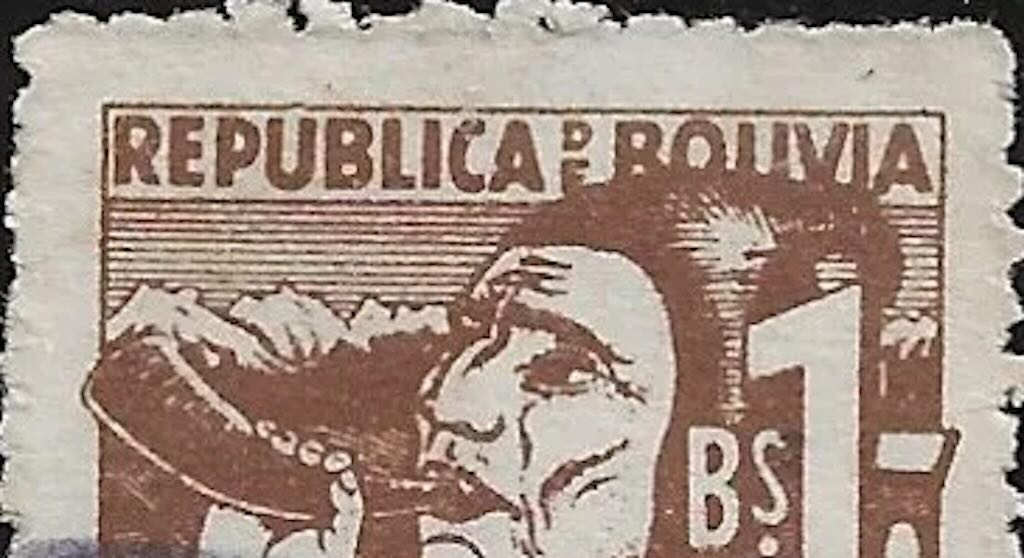
The Plurinational State of Bolivia, is, along with Paraguay, one of two landlocked country in South America. The seat of government and administrative capital is La Paz, but the constitutional capital is Sucre, the seat of the judiciary. The largest city and principal industrial center is Santa Cruz de la Sierra, located on the Llanos Orientales (tropical lowlands), a mostly flat region in the east of the country.
The sovereign state of Bolivia is a constitutionally unitary state, divided into nine departments. Bolivia is the fifth largest country in South America, after Brazil, Argentina, Peru, and Colombia, and one-third of the country is within the Andean mountain range.
Bolivia is named after Simón Bolívar, a Venezuelan leader in the Spanish American wars of independence.
The boliviano (BOB) is the currency of Bolivia. It is divided into 100 cents or centavos in Spanish. Boliviano was also the name of the currency of Bolivia between 1864 and 1963. From April 2018, the Central Bank of Bolivia introduced a new family of banknotes of the Plurinational State of Bolivia. They started with the 10 Bs note, and then gradually arrived to introduce the 200 Bs note, presented in April 2019.
Wikipedia also has a webpage on “Postage stamps and postal history of Bolivia“, where we learn that postage stamps were first issued in 1867.
No surprises, my collection consists of only 37 stamps, starting in 1894, and ending in 1975.
Even with a small assortment of stamps it’s possible to delve into the details of a particular stamp or series. For example, my little grouping of Bolivian stamps starts with seven different stamps from the 1894 Coat of Arms series. It’s important to know that the originals were printed on thin paper, but that reprints from original plates were also made in very large quantities using a thicker paper. It’s beyond my expertise to know how to compare thin and thick paper, but only a couple of my seven stamps appear to be printed on thin paper.
The reality is that for early series from any country there could be different print runs with die redesigns, different retouches, many variations on the same colour, different colour intensities, and even visible design differences. Alongside this there were bogus issues, later reprints and forgers. At the time forgers would target the more expensive stamps, and sell them at a discount. Some of the forgeries were very crude often replacing fine lines with just solid colour. Others even included spelling errors.
Postage stamps are at the same time a passion and a minefield. This post on Bolivian stamps is a good example. Here someone was asking for specialist advice on the different colours and perforations of one particular stamp. Very quickly the topic moved to a possible forged signature on the back on one stamp, and then on to printing of this stamp in both Paris and New York, the quality and paper used, and fraudulent reprints. The same entry goes on to see how someone might try to decided which of their stamps were forgeries, and which originals. The one thing that is often quite impressive are the close-up images of some the stamps.
Facts about Bolivia
National colours – Red, yellow and green
National animal – the Llama
National bird – Andean condor (Vultur gryphus)
National tree – Silk Floss Tree (Ceiba speciosa, formerly Chorisia speciosa)
National flower – the kantuta (Cantua buxifolia) and the patujú (Heliconia rostrata)
National food – salteñas (a kind of empanada)
National drink – Singani is a Bolivian eau-de-vie or brandy distilled from white Muscat of Alexandria grapes
National fruit – Garcinia humilis, known commonly as achachairú or achacha, is a small, prolifically fruiting tree related to the mangosteen
National dance – Huayno, Caporales, Diablada
National sport – Football (probably)
Football nickname – La Verde (‘The Green’)
Highest mountain – Nevado Sajama (6,542 m)
Bouvet Island
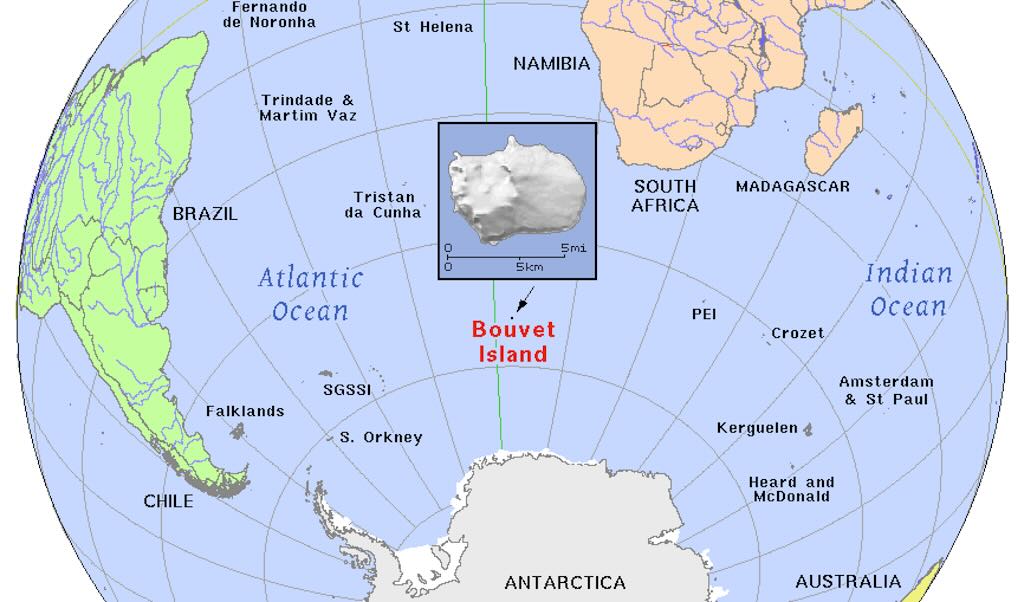
Bouvet Island is a dependency of Norway, and declared an uninhabited protected nature reserve.
Just because it’s uninhabited does not mean that it won’t have any relationship to postage stamps. Here we have page on Polar Philately, in which there are Norwegian stamps, postmarked with Bouvet.
Brazil

The Federative Republic of Brazil is the largest and easternmost country in South America and in Latin America. Brazil is the world’s fifth-largest country by area and the seventh most populous. Its capital is Brasília, and its most populous city is São Paulo. The federation is composed of the union of the 26 states and the Federal District. It is the only country in the Americas to have Portuguese as an official language.
Wikipedia also has a webpage on “Postage stamps and postal history of Brazil“, where we learn that postage stamps were first issued in 1843. In fact, Brazil was the second country in the world, after Great Britain, to issue postage stamps valid within the entire country (as opposed to a local issue). Like Great Britain’s first stamps, the design did not include the country name. These early stamps have often been forged.
Surprisingly I only have 148 Brazilian stamps (including numerous duplicates). The earliest dates from 1890 through to the 1970s, with the latest few from the 1980s.
It’s nice to mention that the very early Brazilian stamps have often been forged, but what does that mean? Well, for the 1843 “Issues of the Empire”, often called “Bulls Eyes”, the genuine stamps are finely engraved, in taille-douce, on yellowish or bluish white wove paper, and are ‘imperf’ (not perforated). The background is composed of an engine-turned design, the white lines are very fine, and the black parts, between the intersections of the white lines, are of almost microscopic minuteness. The figures of value seems to be, as it were, laid upon the design of the background. Following the curves of the figures, there is a very light black outline outside the shaded parts of each, and the engine-turning of the background can be seen between the outlines and the figures.
On the other hand the forgeries are usually very coarsely lithographed, on yellowish white wove paper, also ‘imperf’. The imitation of the engine-turning in the background is poor, all the white lines being very irregular, and of all thicknesses, and the black parts between the intersections of the white lines are very large. The figures of value do not stand well out from the background, although they seem much whiter than in the genuine stamps. There is a coarse outline following the shaded parts of each figure, and the spaces between figure and outline are perfectly white, with no trace of the engine-turning. Immediately inside the inmost line of the ornamental frame there is a sort of chain-pattern running right round the stamp, which is not to be seen in the originals, and inside this again, behind the figures, are three concentric ovals of double black lines, which are intended to represent the darker parts of the engine-turning in the originals. The forgeries are also postmarked ‘RIO DE JANEIRO’ in large capitals, in a large double circle. A very similar postmark is often to be found on the genuine stamp.
This description is just sufficient to highlight the difference between the originals and forgeries, but there are far more extensive descriptions available of the originals. In addition there are at least seven descriptions of different forgeries.
Facts about Brazil
National colours – Green and yellow
National animal – Rufous-bellied thrush (national bird)
National bird – Rufous-bellied thrush (Turdus rufiventris)
National tree – Brazilwood (Caesalpinia echinata)
National flower – of the Golden Trumpet Tree (Handroanthus albus)
National food – Feijoada, this is a Portuguese rich stew made from a variety of ingredients including pork, sausage, pigs ears and tails with black beans which are then served over white rice, chopped kale and orange slices
National drink – Caipirinha is a cocktail from São Paulo, made with cachaça (sugarcane hard liquor), sugar, and lime
National fruit – Cupuaçu (Theobroma grandiflorum)
National dance – Samba, Frevo, Maculelê, Carimbó, Capoeira, Siriri, Forró, Maxixe, Coco
National sport – Capoeira
Football nickname – Seleção (‘The Selection’)
Highest mountain – Pico da Neblina (Mist Peak at 2,995 m)
British Overseas Territory of Saint Helena, Ascension and Tristan da Cunha
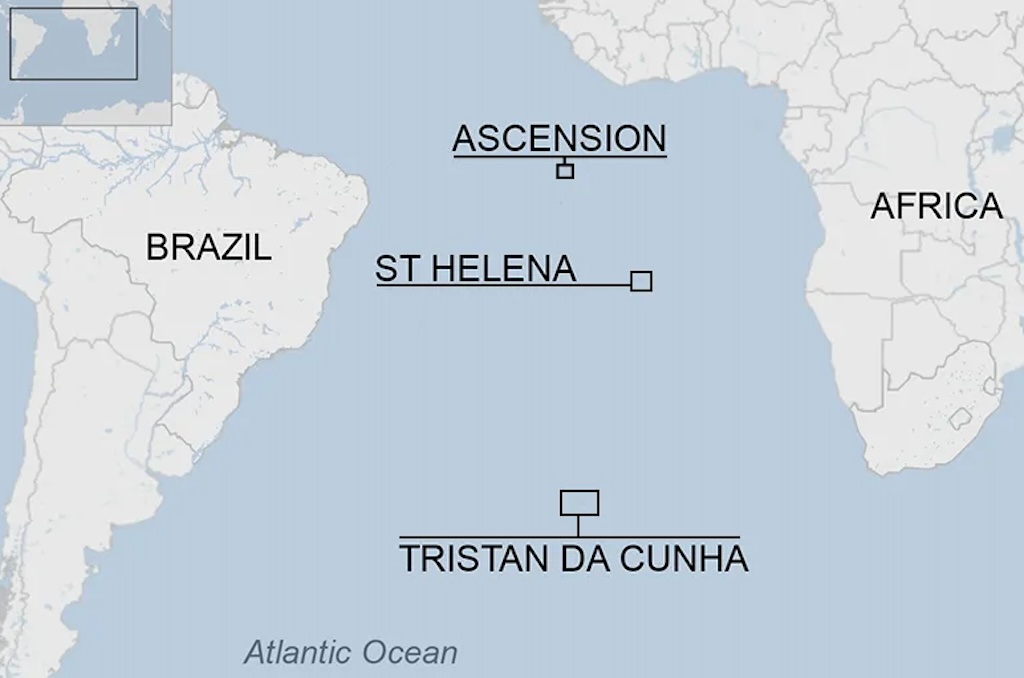
There are 14 British Overseas Territories one of which actually consists of Saint Helena, Ascension Island, and the archipelago of Tristan da Cunha (including Gough Island).
The territories stretch across a huge distance of the South Atlantic Ocean. Between Saint Helena and Tristan da Cunha is the Tropic of Capricorn. The distance between the northern tip of Ascension Island and the southern tip of Gough Island is 3,642 km. However, the three territories lie in the Western Hemisphere and all conform to Greenwich Mean Time.
Saint Helena is one of Britain’s oldest colonies, and is also one of the most remote settlements in the world. Famously it was the place of exile for Napoleon Bonaparte. The island was visited by the Princess Royal in 2002, but the last serving British Ministerial visit was in 1699. The Wikipedia article on the “History of Saint Helena” makes for an interesting read, and there is also a webpage on the “Postage stamps and postal history of Saint Helena” (first stamp issued in 1856).
Ascension Island is an isolated volcanic island, about 1,600 km from the coast of Africa and 2,300 km from the coast of South America. Wikipedia has a webpage on the “Postage stamps and postal history of Ascension Island“.
Tristan da Cunha, is a group of volcanic islands, and is the most remote inhabited archipelago in the world. It is approximately 2,787 kilometres from Cape Town in South Africa, 2,437 kilometres from Saint Helena, 3,949 kilometres from Mar del Plata in Argentina, South America and 4,002 kilometres from the Falkland Islands. Gough Island and Inaccessible Island are wildlife reserves, and the smaller Nightingale Islands is uninhabited. It may be remote but it still has a United Kingdom post code (TDCU 1ZZ). Wikipedia has a webpage on the “Postage stamps and postal history of Tristan da Cunha“, and mentions that the first stamp was issued in 1952.
The Saint Helena pound is the currency of the Atlantic islands of Saint Helena and Ascension. It is fixed at parity with sterling, and so both currencies are commonly accepted and circulated within Saint Helena. Tristan da Cunha, the third part of the territory, officially adopted sterling.
Less than 1,000 people live on Ascension Island, as compared to around 4,500 people living on the “positively overcrowded” Saint Helena. If you are looking peace and quiet, try Tristan da Cunha, which has a population of less than 300.
Chile
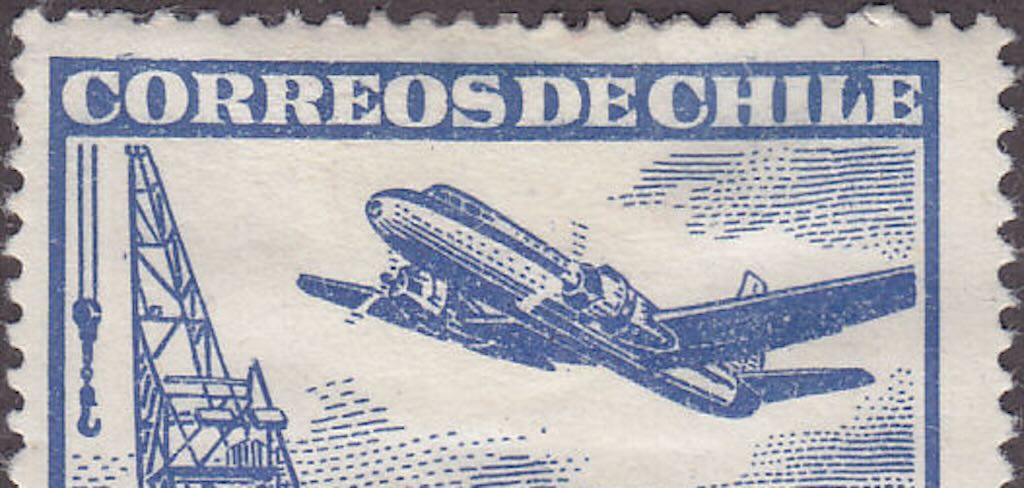
The Republic of Chile, is a country located in western South America. It is the southernmost country in the world and the closest to Antarctica, stretching along a narrow strip of land between the Andes Mountains and the Pacific Ocean. The country also controls several Pacific islands, including Juan Fernández, Isla Salas y Gómez, Desventuradas, and Easter Island, and claims about 1.25 million square kilometres of Antarctica as the Chilean Antarctic Territory. The capital and largest city of Chile is Santiago, and the national language is Spanish.
Diego de Almagro is often credited with the universalisation of the name Chile, after naming the Mapocho valley as such. The older spelling “Chili” was in use in English until the early 20th century before switching to “Chile”.
The peso is the currency of Chile. The current peso has circulated since 1975, with a previous version circulating between 1817 and 1960. Its symbol is defined as a letter S with either one or two vertical bars superimposed prefixing the amount, $ or ![]() (the single-bar symbol, available in most modern text systems, is almost always used). Both of these symbols are used by many currencies, most notably the United States dollar, and may be ambiguous without clarification, such as CLP$ or US$ (the code for the present peso is CLP). It was divided into 100 centavos until 31 May 1996, when the subdivision was formally eliminated (requiring payments to be made in whole pesos).
(the single-bar symbol, available in most modern text systems, is almost always used). Both of these symbols are used by many currencies, most notably the United States dollar, and may be ambiguous without clarification, such as CLP$ or US$ (the code for the present peso is CLP). It was divided into 100 centavos until 31 May 1996, when the subdivision was formally eliminated (requiring payments to be made in whole pesos).
Wikipedia has a webpage on the “Postage stamps and postal history of Chile“, where we learn that postage stamps were first issued in 1853.
I have 130 Chilean stamps (including numerous duplicates), starting in 1878 and ending in the 1960s. Twenty seven of those stamps include airplanes, presumably based on the very voluntarist approach taken by Chile during the period 1929-1945. For example, support for Línea Aérea Nacional (the Chilean National Airline) predates the world-wide emphasis given to State-owned companies in the 1940s. Successive Chilean governments saw a national airline as a key element in their policy of economic nationalism and in defence of their national sovereignty.
Facts about Chile
National colours – Red, white and blue
National animal – The huemul deer (Hippocamelus bisulcus), also known as the South Andean deer, is the iconic animal of Chile
National bird – Andean condor (Vultur gryphus)
National tree – Araucaria (Araucaria araucana), commonly called the monkey puzzle tree
National flower – the copihue (Lapageria rosea)
National food – Empanada,[62] Pastel de Choclo, Marraqueta
National drink – Pisco sour
National fruit – The cherimoya is an important commercial product in Chile, where it is considered the national fruit by some
National dance – Cueca, Rapa Nui
National sport – Chilean Rodeo
Football nickname – La Roja (‘The Red One’)
Highest mountain – Ojos del Salado (6,891 m)
Colombia
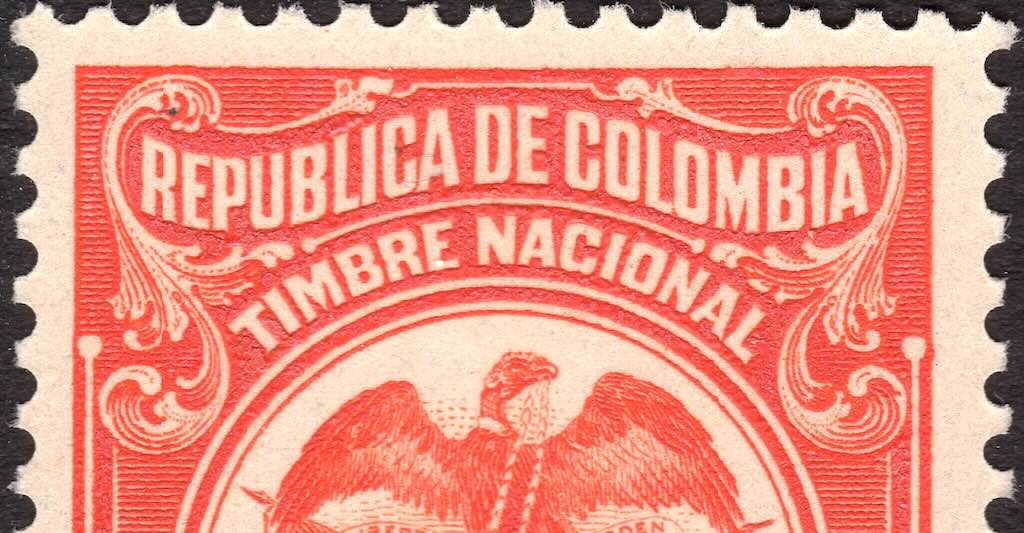
The Republic of Colombia, is a country mostly in South America with insular regions in North America, and is divided into 32 departments. The Capital District of Bogotá is the country’s largest city hosting the main financial and cultural hub. Spanish is the official language, although Creole English and 64 other languages are recognised regionally.
Originally colonised by the Spanish, it became independent in 1819, and was initially called the United Provinces of New Granada. The new polity experimented with federalism as the Granadine Confederation (1858) and then the United States of Colombia (1863), before becoming a republic in 1886.
The name “Colombia” is derived from the last name of the Italian navigator Christopher Columbus.
The Colombian peso ($ and COP) is the currency of Colombia. The official peso symbol is $, with Col$ also being used to distinguish it from other peso– and dollar-denominated currencies. One peso is divided into one hundred centavos, however, because of high inflation in the 1970s and 1980s, Colombia ceased issuing centavo coins for circulation in 1984. It remains customary to write monetary amounts with centavos, although it is rarely used in daily life. The 50 peso coins are still legal tender, but due to its low value and circulation, most cash transactions are rounded to the nearest 100 pesos.
Wikipedia also has a webpage on “Postage stamps and postal history of Colombia“, where we learn that postage stamps were first issued in 1858. In 1886 the Republic of Colombia abolished the states and divided the country into the departments of Colombia, however the constituent states of Colombia continued to issue separate stamps until the early 1900s.
I have 301 Colombian stamps (with some duplicates), starting only in 1904 and continuing through to the 1970s (plus around 40 tax revenue stamps).
Facts about Colombia
National colours – Yellow, blue and red
National animal – Andean Condor (national bird)
National bird – Andean condor (Vultur gryphus)
National tree – Quindio wax palm (Ceroxylon quindiuense)
National flower – Flor de Mayo (Cattleya trianae)
National food – Ajiaco, Bandeja Paisa
National drink – Aguardiente
National fruit – Borojó (Alibertia patinoi)
National dance – Vallenato, Cumbia
National sport – Tejo
Football nickname – Los Cafeteros (‘The Coffee Growers’)
Highest mountain – Pico Simón Bolívar (5,730 m)
Ecuador
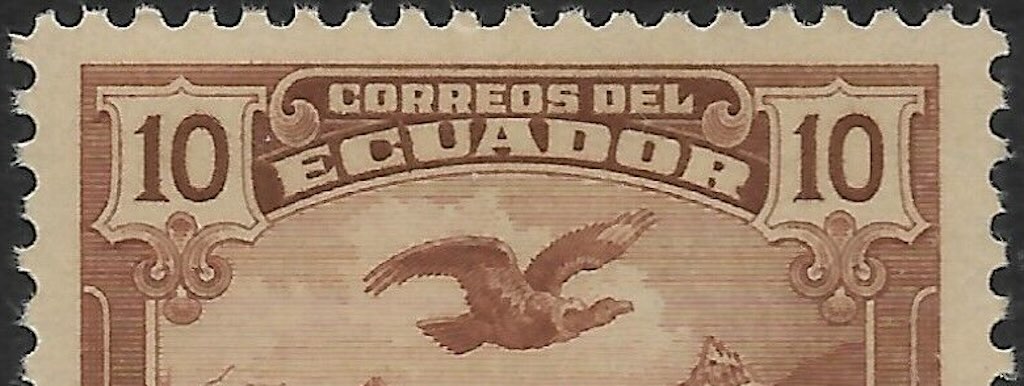
The Republic of Ecuador, is a country in northwestern South America, and includes the Galápagos Islands in the Pacific, about 1,000 kilometres west of the mainland. The country’s capital is Quito, but its largest city is Guayaquil.
Ecuador is a representative democratic presidential republic and with its new constitution of 2008 was the first in the world to recognise legally enforceable rights of nature.
The name Ecuador derived from the former Ecuador Department of Gran Colombia established in 1824 as a division of the former territory of the Royal Audience of Quito.
From the year 2000 the currency of Ecuador is the United States dollar. The peso was a currency of Ecuador until 1884, and this was followed by a variety of currency options, including the Ecuadorian sucre.
Wikipedia also has a webpage on “Postage stamps and postal history of Ecuador“, where we learn that postage stamps were first issued in 1865. Often we see warnings that early stamps from Ecuador can be either reprints/reissues or even forgeries.
I have only 51 stamps from Ecuador, starting in 1880.
Facts about Ecuador
National colours – Yellow, blue and red
National animal – Andean condor (national bird)
National bird – Andean condor (Vultur gryphus)
National tree – Cinchona pubescens (Cinchona pubescens)
National flower – Chuquiraga (possibly)
National food – Encebollado, Guatitas, Fanesca
National drink – Aguardiente
National fruit – Guanabana
National dance – Pasillo
National sport – Football (probably)
Football nickname – La Tri (‘The Tri’), I guess a reference to the three colours
Highest mountain – Chimborazo (6,263 m)
Falkland Islands
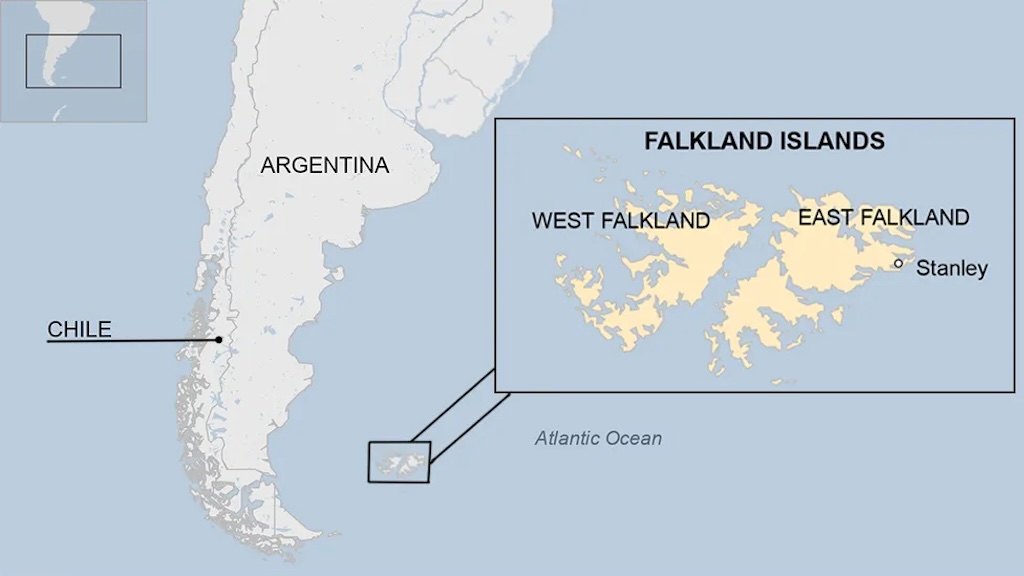
The Falkland Islands (Spanish: Islas Malvinas) is an archipelago in the South Atlantic Ocean on the Patagonian Shelf. The principal islands are about 480 km east of South America’s southern Patagonian coast and about 1,210 km from Cape Dubouzet at the northern tip of the Antarctic Peninsula. The archipelago comprises East Falkland, West Falkland, and 776 smaller islands. As a British overseas territory, the Falklands have internal self-governance, but the United Kingdom takes responsibility for their defence and foreign affairs. The capital and largest settlement is Stanley on East Falkland. The population (less than 4,000 inhabitants in 2021) is primarily native-born Falkland Islanders, the majority of British descent. The official language is English, and Falkland Islanders are British citizens.
The name “Falkland Islands” comes from Falkland Sound, the strait that separates the two main islands. The name “Falkland” was applied to the channel by John Strong, captain of an English expedition that landed on the islands in 1690. He named in honour of Anthony Cary, 5th Viscount Falkland.
The Falkland Island pound is the Islands’ currency, and is equivalent to the UK£ which is accepted everywhere.
French Guiana
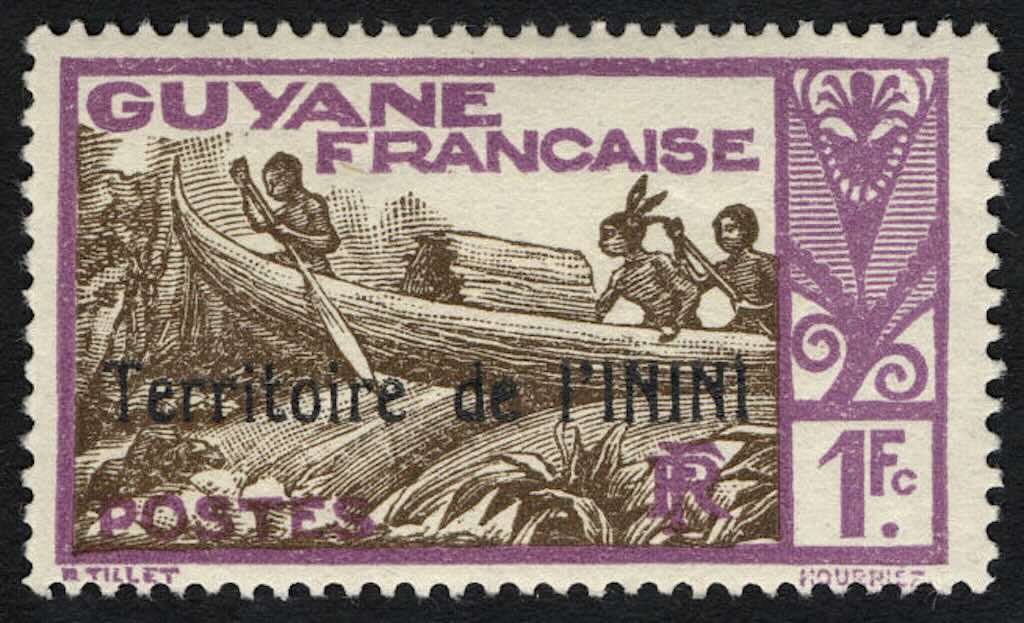
French Guiana is an overseas department of France located on the northern coast of South America in the Guianas and the West Indies, and as such is the largest outermost region within the European Union. French Guiana has a population of around 300,000 people, with half of population living in the metropolitan area of Cayenne. The department is almost entirely covered by forests, a large part of which is primeval rainforest (the Guiana Amazonian Park is the largest national park in the European Union).
The name “Guyana” is an indigenous term meaning “land of many waters”
French Guiana is a part of the European Union, and its official currency is the euro.
Inini was an inland territory of French Guiana, administered separately between 1930 and 1946, after which all of French Guiana became a department of France.
Guyana
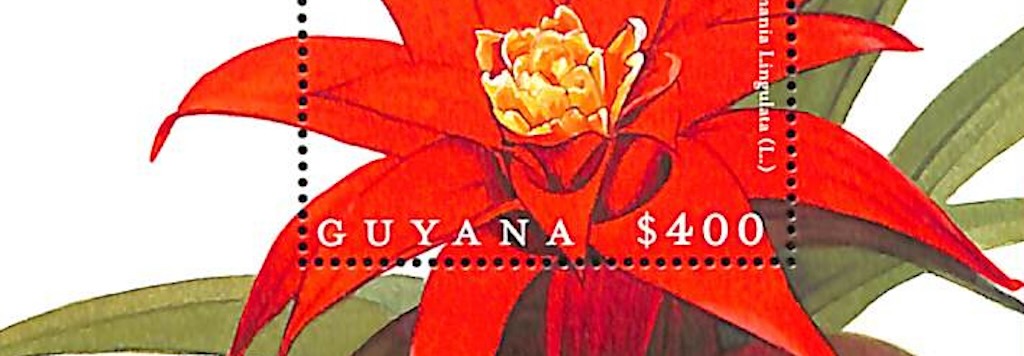
The Co-operative Republic of Guyana, is the third-smallest sovereign state by area in mainland South America, and part of the historic mainland British West Indies. It is one of the least densely populated countries on Earth, and it hosts one part of the Amazon rainforest, the largest tropical rainforest in the world.
In 1831, the united colonies of Demerara-Essequibo and separate colony of Berbice together became a single British colony known as British Guiana. It had a plantation-style economy until the 1950s, but the economy has been undergoing a transformation since the discovery of crude oil in 2015 and the start of commercial drilling in 2019.
The country gained independence in 1966 and officially became a republic within the Commonwealth of Nations in 1970. Guyana is the only mainland South American nation in which English is the official language. However, the majority of the population speak Guyanese Creole, an English-based creole language, as a first language. Guyana is often considered part of the Anglophone Caribbean.
The name “Guyana” derives from Guiana, an earlier name for a larger region that included the areas now called Guyana (British Guiana), Suriname (Dutch Guiana), French Guiana, the Guayana Region in Venezuela (Spanish Guyana), and Amapá in Brazil (Portuguese Guiana).
The Guyanese dollar ($, G$, GY$ and GYD) has been the unit of account in Guyana (formerly British Guiana) since 29 January 1839. However in the early 1970s, a switch to a US dollar peg became increasingly attractive as an anti-inflationary measure and the Eastern Caribbean Currency Authority (of which Guyana was a member) made the switch in October 1975. The Guyanese dollar is normally abbreviated with the dollar sign $, or alternatively G$ (Guyanese Dollar) to distinguish it from other dollar-denominated currencies.
Wikipedia also has a webpage on “Postage stamps and postal history of Guyana“, where we learn that postage stamps were first issued only in 1966. Previously the country was British Guiana and had printed stamps.
Just to make things abundantly clear. British Guiana was a British colony, part of the mainland British West Indies, which resided on the northern coast of South America. Since 1966 it has been known as the independent nation of Guyana. During the colonial period until the early 18th century, there was a separate country known as Spanish Guiana (Guinea Espanola). Today this region is known as the Guayana Region, an administrative region of eastern Venezuela, with boarders to Guyana (formerly British Guiana) and Brazil. There was also a country called Dutch Guiana, some of which was integrated into British Guiana after the Napoleonic Wars in 1814. The remaining part of Dutch Guiana is now independent and is called Suriname.
Facts about Guyana
National colours – Green, red and gold (probably)
National animal – Jaguar (Panthera onca)
National bird – Hoatzin (Opisthocomus hoazin)
National tree – Not declared
National flower – Victoria regia lily (Victoria amazonica)
National food – Pepperpot and chicken curry
National drink – Mauby
National fruit – Coconut (Cocos nucifera), often called the water-nut
National dance – Soca
National sport – Cricket
Football nickname – Golden Jaguars
Highest mountain – Mount Roraima (2810 m)
Paraguay

The Republic of Paraguay, is a landlocked country in South America. It has a population of over 6 million, with nearly 2.3 million living in the capital and largest city of Asunción.
The name Paraguay stems from Guarani paraguá meaning “feather crown” and y meaning “water”, thus paraguaí “feather crown of waters”.
The guaraní (or guaraníes ₲ and PYG) is the national currency unit of Paraguay. The guaraní was divided into 100 céntimos but, because of inflation, céntimos are no longer in use.
Wikipedia also has a webpage on “Postage stamps and postal history of Paraguay“, where it is mentioned that Paraguay issued its first stamps in 1870.
I have 109 stamps from Paraguay, starting from 1881.
Facts about Paraguay
National colours – Red, white and blue
National animal – Pampas Fox, also known as Grey Pampean fox, Pampas Zorro, Azara’s fox, or the Azara’s Zorro (Lycalopex gymnocercus gymnocercus)
National bird – Bare-throated bellbird (Procnias nudicollis)
National tree – Lapacho (Handroanthus)
National flower – Mburucuyá “passion flower” (Passifloraceae)
National food – Sopa paraguaya ( similar to corn bread)
National drink – Tereré (an infusion of yerba mate, but prepared with cold water or juice)
National fruit – Passion fruit (Mburucuyá, the flower is the national flower)
National dance – Paraguayan bottle dance, Paraguayan polka
National sport – Football (probably)
Football nickname – Los Guaraníes (‘The Guaraníes’)
Highest mountain – Cerro Tres Kandú (842 m)
Peru
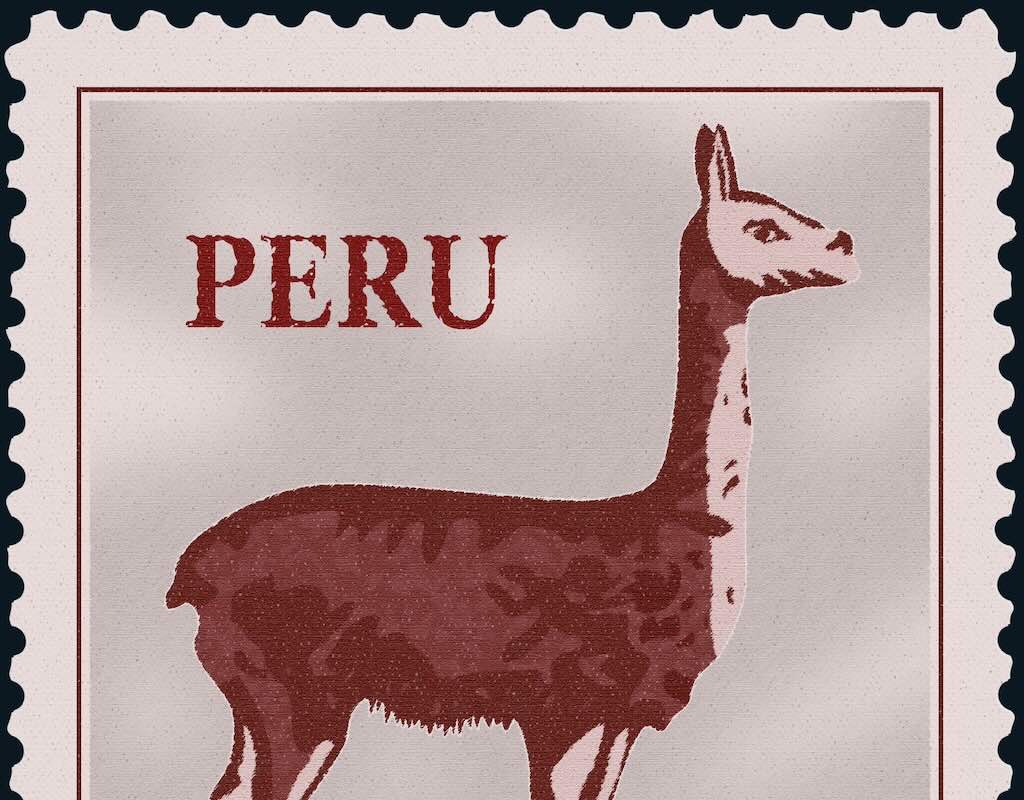
The Republic of Peru, is in the third largest country in South America. It is a so-called megadiverse country with habitats ranging from the arid plains of the Pacific coastal region in the west to the peaks of the Andes mountains extending from the north to the southeast of the country to the tropical Amazon basin rainforest in the east with the Amazon River. Peru has a population of over 32 million, and its capital and largest city is Lima.
Peru completed its independence in 1824, and today it is a representative democratic republic divided into 25 regions (the main spoken language is Spanish).
The sol (or soles S, or PEN), which replaced the Peruvian inti in 1991. The sol is a return to Peru’s historic currency, as the previous incarnation of sol was in use from 1863 to 1985. Although sol in this usage is derived from the Latin solidus (lit. ’solid’), the word also means “sun” in Spanish. There is thus a continuity with the old Peruvian inti, which was named after Inti, the Sun God of the Incas.
Wikipedia also has a webpage on “Postage stamps and postal history of Peru“, where it is mentioned that Paraguay issued its first stamps in 1858.
I have only 46 stamps from Peru, the earliest from 1884.
Facts about Peru
National colours – Red and white
National animal – Andean cock-of-the-rock (national bird)
National bird – Andean cock-of-the-rock (Rupicola peruvianus)
National tree – Cinchona officinalis (Cinchona)
National flower – cantuta (Cantua buxifolia)
National food – Ceviche
National drink – Pisco sour
National fruit – Lucuma
National dance – Marinera
National sport – Paleta frontón
Football nickname – La Bicolor (‘The Bicolour’)
Highest mountain – Huascarán (6768 m)
South Georgia and the South Sandwich Islands
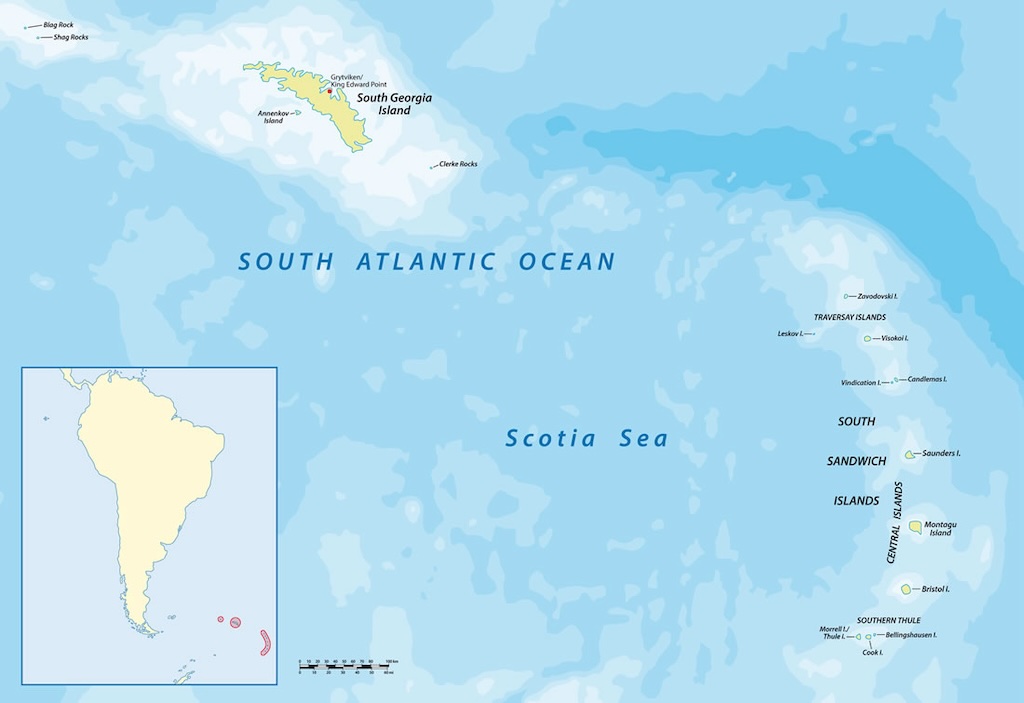
South Georgia and the South Sandwich Islands is a British Overseas Territory in the southern Atlantic Ocean. It is a remote and inhospitable collection of islands, consisting of South Georgia and a chain of smaller uninhabited islands known as the South Sandwich Islands. The Falkland Islands are about 1,300 kilometres west from its nearest point.
Wikipedia has a webpage on “Postage stamps and postal history of South Georgia and the South Sandwich Islands“, where we learn that postage stamps were first issued in 1944.
Index of articles relating to South Georgia and the South Sandwich Islands.
Suriname

The Republic of Suriname is the smallest country in South America by both population and territory, and is sometimes considered part of the Caribbean and the West Indies. Situated slightly north of the equator, over 90% of its territory is covered by rainforests, the highest proportion of forest cover in the world. The capital and largest city is Paramaribo, which is home to roughly half the population.
Europeans arrived in the 16th century, with the Dutch establishing control over much of the country’s current territory by the late 17th century. In 1954, Suriname became a constituent country of the Kingdom of the Netherlands, and on 25 November 1975, it became independent.
It is the only sovereign nation outside Europe where Dutch is the official and prevailing language, and an estimated 60% of the population speak Dutch as a native language. Sranan Tongo, an English-based creole language, is a widely used lingua franca. Most people live along the northern coast, centered around Paramaribo, making Suriname one of the least densely populated countries on Earth.
The name Suriname may derive from an indigenous people called Surinen, who inhabited the area at the time of European contact.
The Surinamese dollar (SRD) has been the currency of Suriname since 2004, and is divided into 100 cent. The Surinamese dollar is normally abbreviated with the dollar sign $, or alternatively Sr$ to distinguish it from other dollar-denominated currencies. In spoken Surinamese Dutch, it is widely referred to by its acronym SRD, with “dollar” generally being understood as meaning the US dollar.
Wikipedia also has a webpage on “Postage stamps and postal history of Suriname“, where we learn that postage stamps were first issued in 1873. Until Suriname gained state autonomy in 1954, most stamps featured the head of the Dutch monarch on them.
Facts about Suriname
National colours – White and green
National animal – Lesser Kiskadee (national bird)
National bird – Lesser Kiskadee (Philohydor lictor)
National tree – Kankantri (Ceiba pentandra), often called silk cotton
National flower – faya lobi (“fiery love”), the jungle geranium (Ixora coccinea), is commonly considered the national flower
National food – Pom
National drink – Kasiri
National fruit – Surinam cherry (probably)
National dance – Kaseko
National sport – Football (probably)
Football nickname – Natio (‘National’)
Highest mountain – Julianatop (1,280 m)
Uruguay
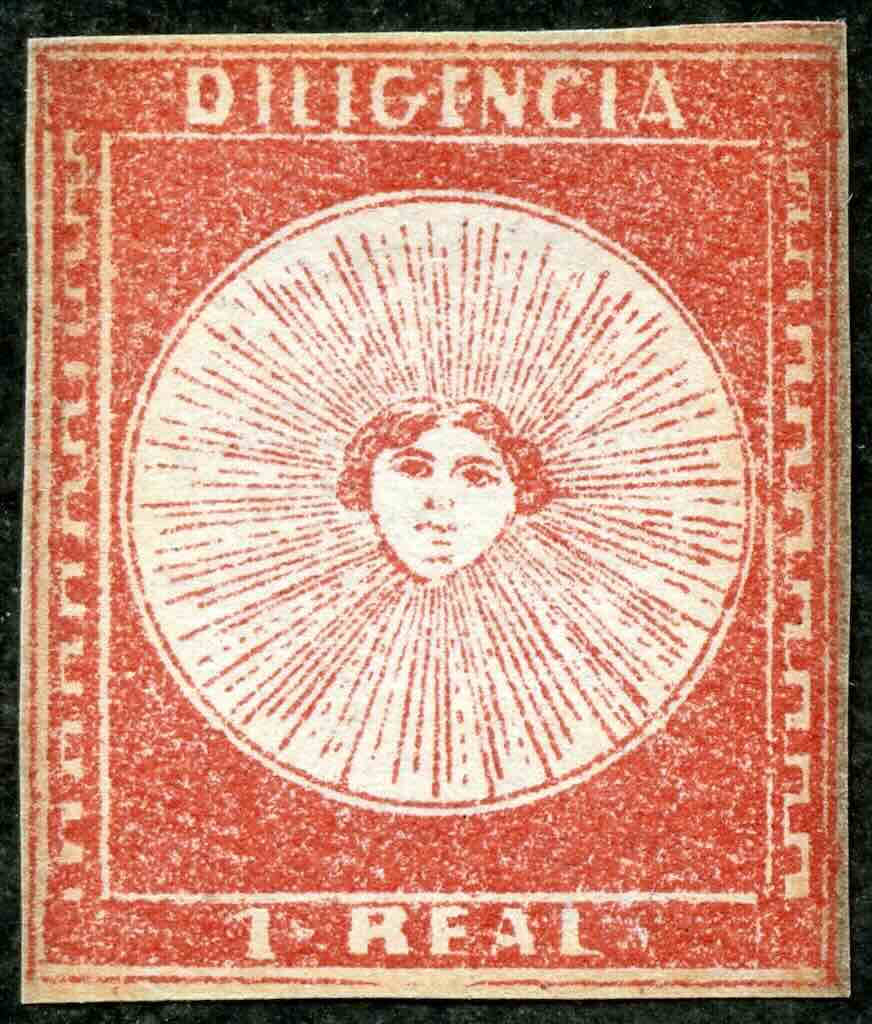
The Oriental Republic of Uruguay is part of the Southern Cone region of South America. Uruguay has a population of around 3.4 million, with nearly 2 million living in the metropolitan area of its capital and largest city, Montevideo.
Uruguay won its independence between 1811 and 1828, and today it is democratic constitutional republic, with a president who serves as both head of state and head of government.
Uruguayan peso (UYU) has been a name of the Uruguayan currency since it’s settlement by Europeans. The present currency was adopted in 1993 and is subdivided into 100 centésimos, although centésimos are not currently in use.
Wikipedia also has a webpage on “Postage stamps and postal history of Uruguay“, where we learn that postage stamps were first issued in 1859.
I have 90 stamps from Uruguay, starting from 1892.
The stamp shown above is the 1856 El Sol de Mayo, and is a representation of the Inca sun god, Inti. It is one of the national emblems of both Argentina and Uruguay, and it also appears on their flags.
Facts about Uruguay
National colours – Blue and white
National animal – Southern lapwing (national bird)
National bird – Southern lapwing (Vanellus chilensis)
National tree – Árbol de Artigas (Peltophorum dubium)
National flower – the Ceibo tree (Erythrina crista-galli)
National food – Chivito
National drink – Mate
National fruit – Blueberry (Vaccinium)
National dance – Tango, Pericón, Candombe
National sport – Destrezas Criollas
Football nickname – La Celeste (‘The Sky Blue’)
Highest mountain – Cerro Catedral (1685 m)
Venezuela
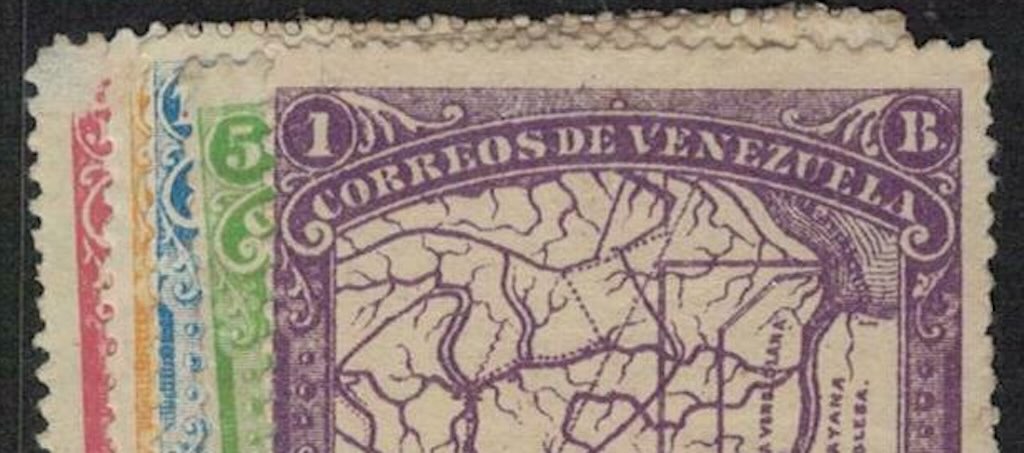
The Bolivarian Republic of Venezuela is a country on the northern coast of South America, consisting of a continental landmass and many islands and islets in the Caribbean Sea. Its population is about 29 million, and the capital and largest urban agglomeration is the city of Caracas.
Venezuela became a full sovereign country in 1830, and today it is a Federal presidential republic under a centralised authoritarian state.
Venezuela also has the world’s largest known oil reserves.
The the name “Venezuela” may have evolved from an indigenous people who called themselves the Veneciuela.
The present currency unit in Venezuela is the Venezuelan bolívar. However, rampant inflation has prompted two recent redenominations. The first occurred in August 2018, when the sovereign bolívar (bolívar soberano) was introduced. Then in October 2021, there was a “Nueva expresión monetaria” or new monetary expression, which removes 6 zeros from the currency without affecting its denomination but did introduce a new code VED. Both currencies are in circulation, though the economy has undergone extensive currency substitution, so the majority of transactions happen in US dollars, or, to a lesser extent, the Colombian peso.
Wikipedia also has a webpage on “Postage stamps and postal history of Venezuela“, where we learn that postage stamps were first issued in 1859.
I have 202 stamps from Venezuela, starting from 1882, and through to the end of the 1950s. I also have more than 60 revenue stamps (with duplicates).
Facts about Venezuela
National colours – Yellow, blue and red
National animal – Venezuelan troupial (national bird)
National bird – Venezuelan troupial (Icterus icterus)
National tree – Araguaney (Tabebuia chrysantha)
National flower – Flor de Mayo (Cattleya mossiae)
National food – Pabellón Criollo, Arepa
National drink – Rum
National fruit – Purple Mangosteen or the Button Mangosteen (Garcinia mangostana)
National dance – Joropo
National sport – Baseball
Football nickname – La Vinotinto (‘The Wine-Red’)
Highest mountain – Pico Bolívar (4,978 m)




